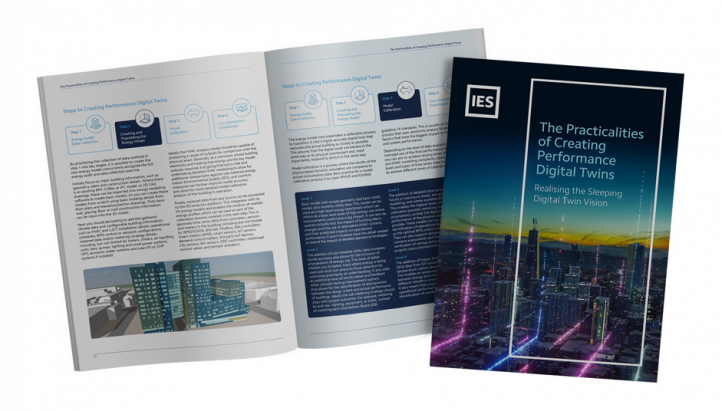Building performance experts, IES, have launched a new guide exploring the practicalities of creating performance digital twins to improve the performance of existing buildings and support operational energy and carbon reduction goals.

This new guide aims to offer practical advice to address the findings of a recent whitepaper, developed by IES in collaboration with a number of industry experts, which introduced IES’s concept of the Sleeping Digital Twin – the idea that dormant 3D design, compliance and BIM models which exist for the majority of the current building stock are not currently being utilised to their full potential throughout the building lifecycle.
Research which informed this whitepaper revealed widespread industry enthusiasm for the concept of reutilising these dormant models and their power to more effectively decarbonise our buildings. However, challenges surrounding the availability and accessibility of dormant design models were identified as a key barrier to realising the company’s vision for the better utilisation of energy models throughout the building lifecycle on the route to decarbonise.
Findings from the original whitepaper indicated that building owners and operators are often unaware that a model of their building already exists, or they know about it but due to various reasons are unable to access it. This means that in many cases, it may be more practical and efficient to build the model from scratch.
This is a challenge that IES’s own consultants often come up against when creating performance digital twins for clients, but they have found ways to overcome this which they are now sharing in this latest guide.
Featuring insight from IES’s consultants, alongside real-world case study examples, this guide takes readers through the robust step-by-step process used by the IES team to develop performance digital twins to improve the efficient operation of buildings, with particular focus on how this can be achieved without access to a pre-existing design model. It further highlights the application of such digital twins to continually monitor and improve operational performance throughout the lifecycle of buildings.
Download your free copy of the guide here to find out more.
N.B. The information contained in this entry is provided by the above supplier, and does not necessarily reflect the views and opinions of the publisher


